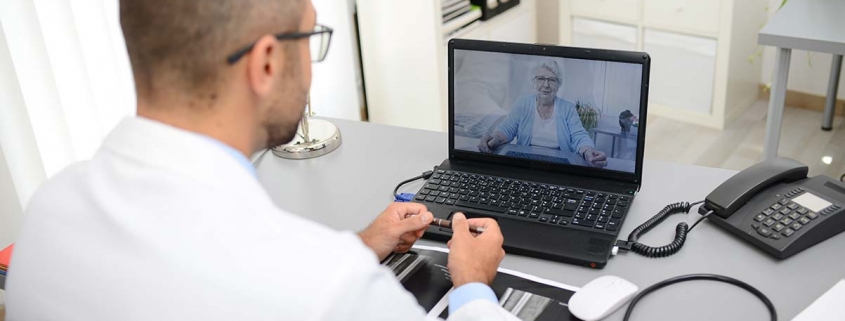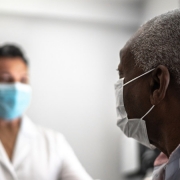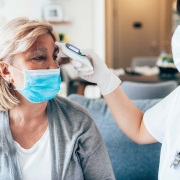Drivers and Key Criteria for Successful Telehealth Programs
The onset of the COVID-19 pandemic has brought telehealth and telemedicine to the forefront of the American healthcare industry. Through laptops, tablets and a host of other devices, telehealth allows physicians to examine and diagnose their patients remotely to comply with current social distancing guidelines and combat the spread of this highly contagious and deadly virus.
Even before COVID-19 made its way to the United States, the American Oncology Network (AON) was advancing use of telehealth as an effective element of its care management services, using video conferencing to connect patients with nutritionists. This has proved beneficial for our practices who now need to ramp up telehealth systems quickly in response to the pandemic to ensure continuity of care and optimal safety for their patients.
Strong systems that are easy to use and can adapt quickly to change are crucial to the design of successful telehealth programs, especially at a time when demand is at an all-time high.
Ramping Up Quickly
Implementing an effective telehealth system is a complex, resource-intensive undertaking. It’s a cross-functional effort requiring clinical, operational and technical teams to work together to prepare technologies, workflows and staffing models. Proper codes must be added, financial teams brought up to speed and staff trained on electronic medical records (EMR) and telehealth platforms. It can take weeks or months – and prove quite costly – for the average private practice. In addition, small, independent practices rarely employ full-time IT or security staff, necessitating help from outside professionals who are not likely to be familiar with oncology. This not only increases costs, but also lengthens implementation time.
However, AON providers were able to rapidly start treating their patients, drawing on our team’s expertise and scalable system designs. As demand for telehealth skyrocketed, we quickly identified an appropriate vendor, wrapped up the paperwork and helped our practices onboard the new system in less than 20 hours. After four days of training, our provider groups were seeing patients. So far, they have amassed 2,717 virtual visits – and counting.
In addition, practice administrators and providers have peace of mind knowing that our security experts are aligning systems with the latest best practices and can address potential issues in hours rather than days.
Keeping it Simple
When it came to choosing a telehealth solution, AON wanted a partner that was flexible, scalable and could adapt very quickly to change. Most importantly, we wanted to keep the system simple for physicians and their patients.
On the physician side, it was important that the solution offer streamlined navigation so providers could fire up their device and be on time for scheduled appointments. For patients, we wanted to minimize effort and resource requirements. As such, any device – laptop, cellphone, tablet, etc. – equipped with a camera and microphone allows them to log on and speak with their physician. Our systems do not require installation of any additional programs or apps – we simply send patients a link that runs natively in a browser, making telehealth easy and accessible for everyone to use, no matter how savvy they are when it comes to technology.
Customers Come First
The strength of AON isn’t just our systems, but the customer-first approach that drives our IT department. That’s why we were able to shift gears so quickly to handle the swift changes brought about by COVID-19, and why we were able to train more than 130 physicians and mid-level providers in one weekend, rather than our normal load of about 10 providers over the course of a week. Nursing professionals and social workers have since been added to training, expanding the spectrum of possible telehealth services.
We have providers of all different stripes when it comes to technology proficiency – and it doesn’t matter. AON is here to equip our practices with whatever they need, whether that means installing cameras or enabling secure online meetings.
While telehealth has its limits – physicians can’t physically examine their patients – the COVID-19 pandemic has underscored its effectiveness at supporting certain care processes. However, to be successful, a telehealth system must be implemented with patients and providers at the forefront, and it needs to be able to adapt to change. In preparation for expected surges in patients and the future of healthcare, oncology practices are wise to consider a strong partner to help guide the telehealth process.













